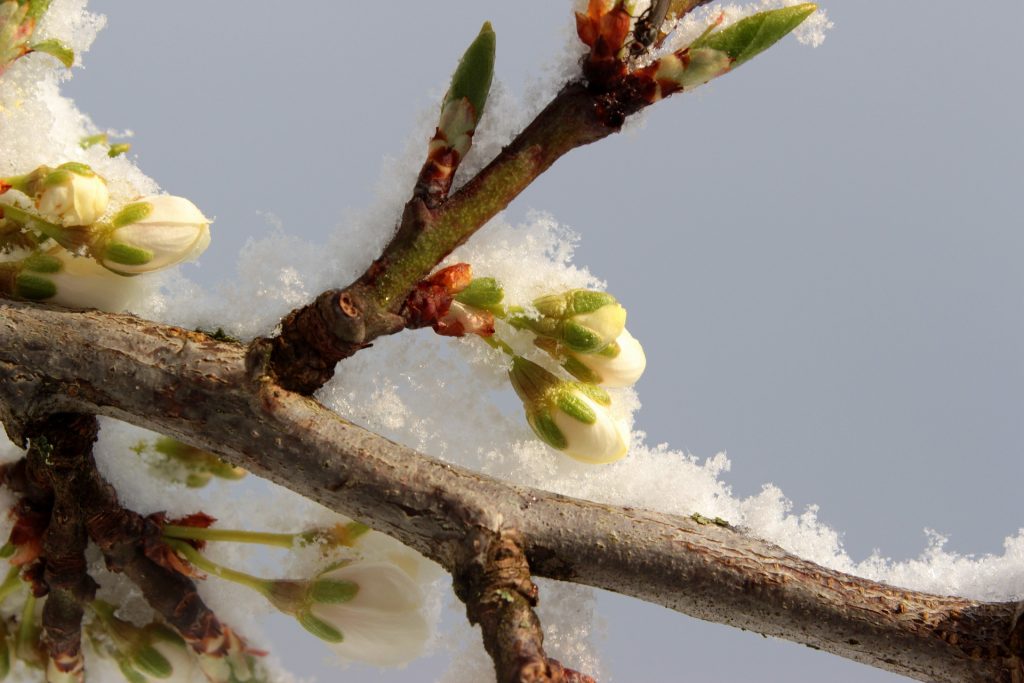Temperature fluctuations ranging from the 60’s and 70’s down to the teens created many issues for budding trees during the last few months. While you were likely enjoying the mild winter, your trees may not have been so lucky. You might have noticed many trees beginning to bud and flower as early as February – much too soon for many of our native trees and many of the non-native trees as well.
This unseasonable weather creates confusion for trees, causing some to break dormancy early. The hard freeze that occurred soon after the mild temperatures results in lasting tree damage.
Fluctuating Weather Harms Early Buds and Twigs
 Early budding combined with a late freeze can be problematic for trees – particularly if temperatures drop quickly or for an extended period of time. Many new flowers and buds are highly susceptible to frost damage. Although frost damage is unlikely to kill the tree, extreme temperature fluctuations are stressful and can set the tree back when spring actually arrives. Weather shock can also result in:
Early budding combined with a late freeze can be problematic for trees – particularly if temperatures drop quickly or for an extended period of time. Many new flowers and buds are highly susceptible to frost damage. Although frost damage is unlikely to kill the tree, extreme temperature fluctuations are stressful and can set the tree back when spring actually arrives. Weather shock can also result in:
- Dieback of new growth
- Leaf browning
- Leaf drop
Severe temperature fluctuations can cause wood cells to freeze and rupture. While this typically doesn’t kill twigs quickly, it can set the stage for fungi that may attack the dead or weakened cells. Mid-season twig death and dieback may result. If this dieback is substantial, pruning may be needed. Slow-release fertilization or enhancing soil conditions can enhance growth that will allow twigs to rebound and resume normal growth.
While not necessarily devastating to leaf buds, which rebound fairly quickly, fruit and flowering trees are the most likely to suffer lasting damage. A hard freeze can kill off early flowers and may prevent them from producing anything more for the year.
Limiting Long-Term Tree Damage
You may not be able to control the weather or when your trees decide to bud, but there are a few precautionary steps you can take to help limit the long-term damage of extreme weather changes:
- Mulching: A hearty layer of mulch provides insulation against sub-freezing temperatures for the root systems of your trees while also helping retain water.
- Fertilization: Slow-release fertilizer can assist with the development of new tissue that can help twigs resume normal growth.
- Pruning: Trimming off any dieback that occurs will promote healthy growth and ensure your tree expends energy efficiently. If you need to trim a larger tree, be sure to consult a professional tree service to ensure branches are removed safely.
- Tree risk assessments: Getting the trees on your property professionally assessed will help spot tree damage caused by late frosts. In doing so, you can repair the damage to make your tree healthier and your property safer.
